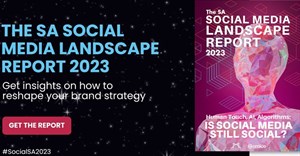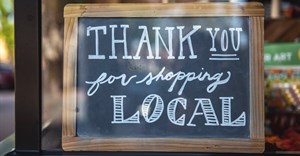Trending



 Sabre EMEA 2024 Awards: Razor PR, Retroviral top SA agenciesDanette Breitenbach
Sabre EMEA 2024 Awards: Razor PR, Retroviral top SA agenciesDanette Breitenbach

Elections 2024
Jobs
- Digital Marketer Cape Town
- Account Executive Cape Town
- Digital Manager Johannesburg
- Writer and Content Specialist Centurion
- Social Media Manager Johannesburg
- Digital Printing Machine Operator Cape Town
- Digital Media Sales Manager Cape Town
- Digital Marketer Johannesburg North
- Social Media Digital Projects Administrator Pretoria
- Account Director Johannesburg
The digital landscape of South Africa

Africa is a mobile first nation with 33% of internet users using a mobile phone as their primary device to browse the internet. This has prepared the continent for what is to come – a mobile phone as the chosen device to not only browse, but also shop and do all personal banking.
Demand for fast and cheaper internet
The use of the internet has resulted in two types of customers; those who demand faster internet and those who demand cheaper data prices. Arthur Goldstuck, managing director of researchers at World Wide Worx, believes there is a clear division between high-end and low-end internet users.
“One can see massive appetite for faster internet access at the top of the market and cheap internet access at the bottom of the market,” he says. “We see that in the fact that the rollout of fibre-to-the-home was followed very shortly by the decline of ADSL connections in South Africa. With the appetite for fast internet access – especially to use services like Netflix and Showmax - ADSL isn’t good enough for people anymore if they have access to fibre.”According to his report, ‘The Internet Access in South Africa 2017 study’, there are 29 million smartphone users but only 22 million internet users. “[This] tells us a quarter of the smartphone user base cannot afford data.”
The rise of e-commerce in South Africa
Although a slow start, online shopping has started to pick up serious steam in the last 12 months with 58% of online adults in South Africa making a purchase online. An estimated R37.1bn has been spent online in the last year alone.
It is predicted that South Africans will spend upwards of R53bn this year.
According to a study commissioned to Ipsos by PayPal, there was an estimated 65% growth in online spend using a mobile phone between 2015 and 2016. This includes the use of a smartphone or a tablet.
So how has this affected retailers who have brick and mortar establishments? They have opened their doors, so to speak, online and now have both online and physical shops to appease the e-commerce movement.
What do we know about the South African online shopper?
The online shopper in South Africa would be predicted to be a female due to the wide range of fashion stores online. According to research by Effective Measure there are actually significantly more male online shoppers, making up 54% of the online shoppers in South Africa with only 46% being female.
Again, if you thought it was the younger generation doing most of the shopping, you’d be wrong. More than a quarter of the study respondents were over the age of 60, followed by a tie (11%) between 40-44 and 45-49 and then 55-59, 35-39 and 50-54 (10%).
In fact, the ‘younger generation’ only made up 1% - 8% of the total online users in South Africa. Surprising, isn’t it?
The most popular online purchases
So, what are South African mobile users using the internet for the most when it comes to online shopping? The study showed that 22% of all recent purchases made by South Africans online were for travel tickets.
- This was followed by:
- Software and computing equipment
- Clothing and accessories
- Event tickets
- Books
- Health, beauty and gifts
The motivation for these purchases included; time and process convenience, special offers, choice, price comparison, more access to product information, international stores, cheap alternatives and access to product reviews. Almost half of all respondents were from Gauteng.
The future of the digital landscape
As online investment grows online in South Africa and more consumers are willing to shop online, brands will invest more online using new tools and features and platforms such as Google AdWords, Google Display Network and YouTube ads.
Here, brands are able to pinpoint their customers using high ranking keywords and also mechanisms which target certain demographics that would be most likely to purchase their products. The idea is to anticipate customer needs to offer them more catered services and solutions.
According to research by Google, marketers continue to find innovative ways to drive relevance such as dynamically served email and mobile content and programmatic media buying. Special software can even be used to automate the buying, placement, and optimisation of media inventory.
More businesses will lean on reporting structures such as Google Analytics as well as forms of Artificial Intelligence to not only better understand their customer but to improve their overall browsing experience on both a desktop and a mobile device.
Facebook allows you to target an audience who have a specific political view, luxury buyers, green cause supporters and of course, geographical positioning.
Lastly, we can expect the trend of chatbots or ‘robot chats’ to increase in 2018. This form of artificial intelligence allows companies to set automated conversations with their users who are looking for more information on a product. Chatbots are a great solution for companies who would like to lower their overheads and avoid hiring customer service staff.
Digital marketing is a constantly evolving landscape and it is exciting to witness the trends that occur as marketers look at further solutions and innovative ways to capture their audiences’ attention while providing a customer-centric service.















